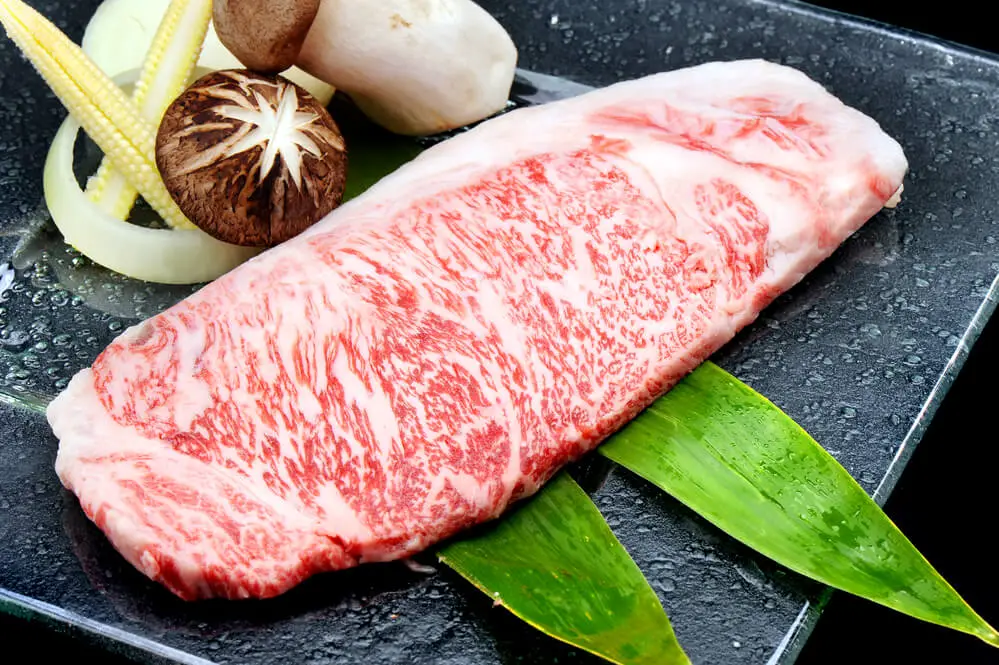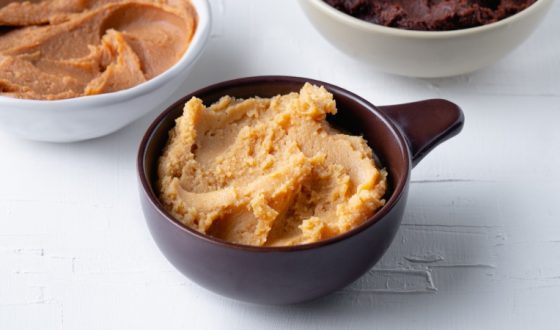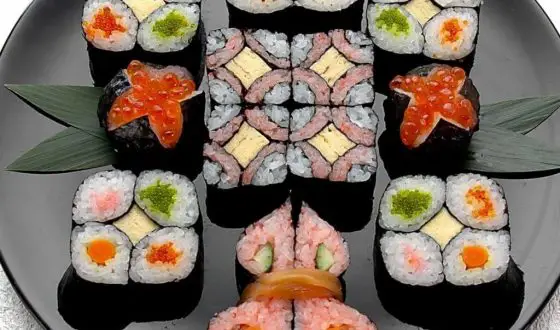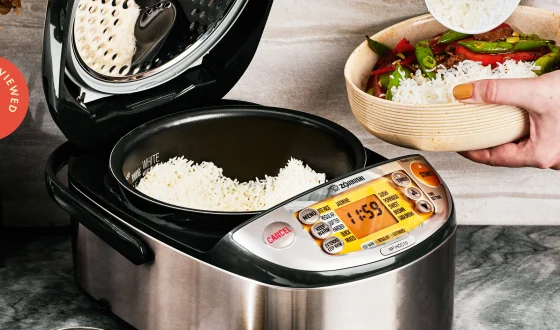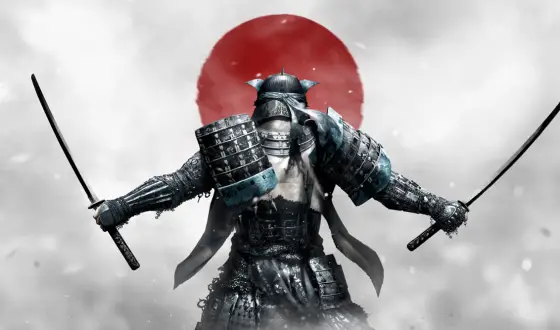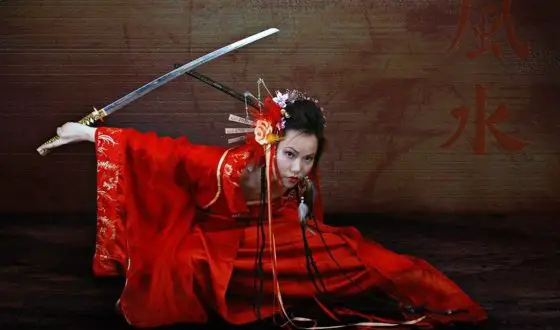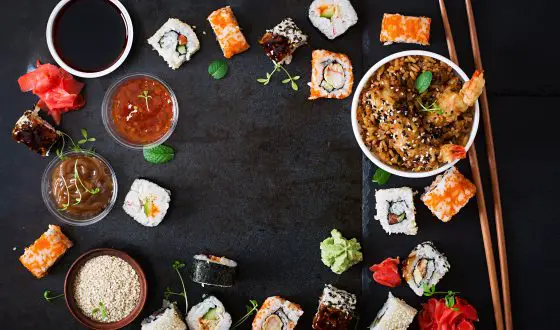How Much Is Wagyu Beef? Price Per Pound
Mentioning the best kinds of beef in the world, wagyu beef must be on the list. Of course, this type of meat is extremely expensive because of its quality as well as breeding techniques, etc. So, how much is wagyu beef? Let’s check out this blog to know its price!
Wagyu Beef: A Healthy And Nutritious Meat
Wagyu beef is high-quality meat that is both nutritious and delicious.
“Japanese cow” is how the word wagyu is translated. Wagyu beef is produced by four different breeds of cows, which are Japanese Black, Japanese Brown, Japanese Poll and Japanese Shorthorn.
Traditionally, the cattle were fed beer or sake and massaged to prevent cramps because of Japan’s rough terrain. These breeding procedures in combination with the cow’s DNA produce the so-called wagyu beef that is beautifully marbled, buttery, and tender. It’s also healthier than commercial beef since it contains more monounsaturated fats and omega-3 fatty acids.
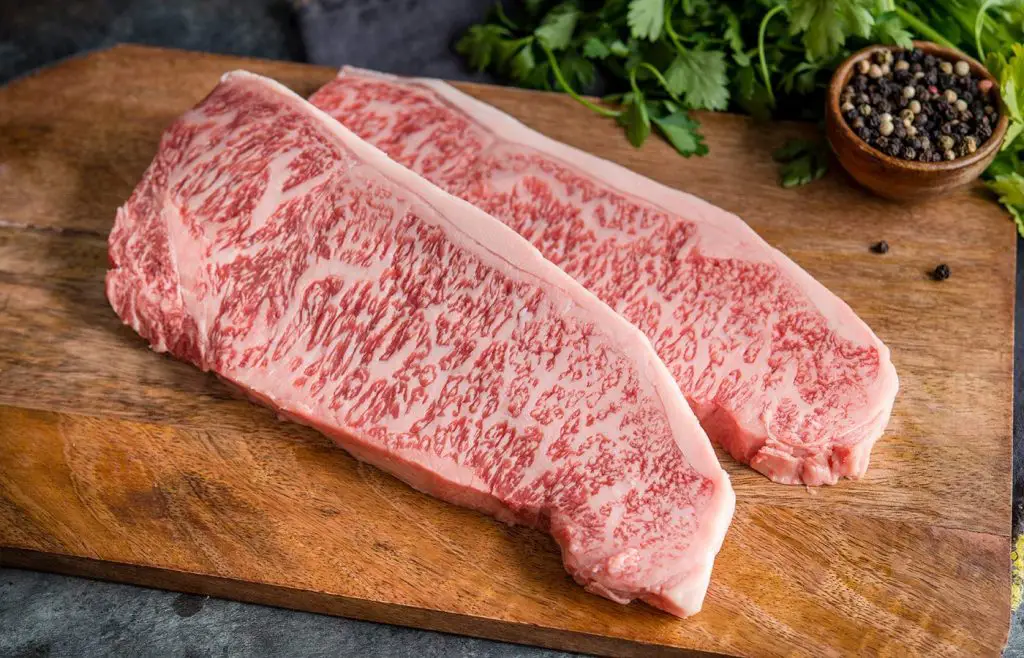
Wagyu beef is beautifully marbled, buttery, and tender thanks to the cow’s DNA as well as special breeding procedures.
How Much Is Wagyu Beef?
Reading the previous part, you know that Wagyu beef is both tasty and healthy, even healthier than commercial beef. So, how much is wagyu beef?
High-grade wagyu, which is produced in Japan and praised for its rich marbling and buttery flavor, can cost up to $200 per pound, with the cows themselves fetching up to $30,000.
Wagyu is graded on two primary criteria: the amount of meat produced and the marbled fat quality. In Japan, only A3 to A5 wagyu is allowed for sale. And the higher the grade, the more expensive it is.
When the cows are about 10 months old, they are sent to the fattening farm and fed a mixture of fiber and high-energy concentrate prepared from rice, wheat, and hay three times a day for almost two years until the animals are almost 50% fat. The length of this fattening process and the high import prices of large amounts of concentrated feed increases the beef price. When a cow is sold at auction, it can cost as much as $30,000.
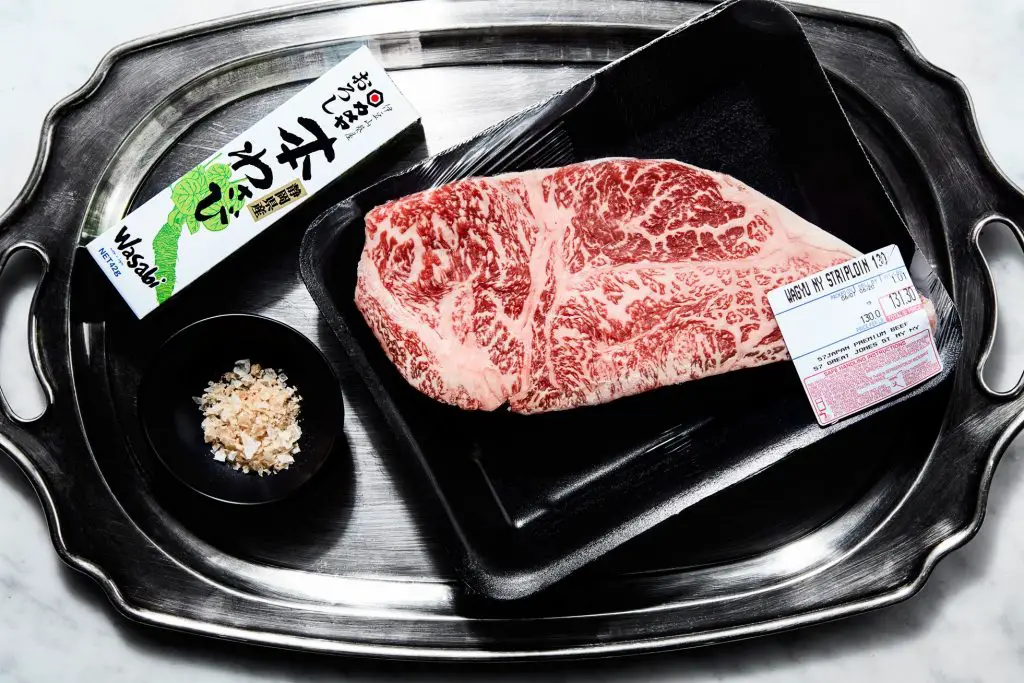
High-grade wagyu can cost up to $200 per pound, with the cows themselves fetching up to $30,000.
SEE MORE:
While there are more than 300 different types of wagyu, the most famous cuts originate from ten different regions. Matsusaka wagyu from Mie Prefecture is one of the most expensive cuts, prepared entirely from virgin female cows and praised for its tenderness. One Matsusaka cow was sold for 50 million yen ($400,000) in 2002. However, Kobe beef, which comes from the city of Kobe in Hyogo Prefecture and is manufactured exclusively from steers or castrated bulls, is the most well-known cut of wagyu.
A5 Miyazaki, a two-time winner of the “Wagyu Olympics,” is the highest-ranking wagyu. A5 Miyazaki will cost you at least $100 per pound or more. However, olive wagyu is even more desirable than the A5 Miyazaki. It is a rare steak made from calves fed squeezed, dried olive peels added into their feed. This special wagyu is said to be incredibly tender, and a steak can cost anywhere from $120 to over $300.
Why Is Wagyu So Expensive?
Well, there are 10 factors that will explain the extremely high price of wagyu beef. Now, let’s see what they are!
1. Popularity
Why is wagyu so expensive? Well, the first reason for this is because of its popularity
Obviously, Wagyu steak is so expensive because it is so sought-after. The demand for authentic Wagyu beef has risen dramatically in recent years, resulting in a significant increase in the value of Japanese beef exports over the last six years.
The superb flavor and tenderness of this meat are the major reasons for its popularity. Because Wagyu beef fat melts at lower temperatures than ordinary beef fat, it can be eaten rare and still melt in your tongue.
Wagyu beef is popular not just because of its superior taste, but also because it is healthier than other varieties of red meat. Wagyu beef contains a high ratio of monounsaturated to saturated fat and is a rich source of Omega-3 and Omega-6 fatty acids, whereas red meats, in general, are renowned for their high levels of saturated fat.
2. Special Rearing Requirements
When it comes to rearing and feeding Wagyu cattle, there are certain requirements that farmers must comply with in order for these animals to meet quality standards. Therefore, this is another factor contributing to the priciness of Wagyu beef.
Beside ensuring that breeding cattle and pregnant cows have plenty of pasture to graze, all calves are covered in warm jackets to protect them from the cold weather in winter. What’s more, they’re also hand-fed a milk substitute until they’re around 10 months old, when they’re taken to fattening farms.
Once they arrive at the fattening farms, each Wagyu specimen is given a name rather than a number. These cattle are fed a costly high-energy diet made up of rice, wheat, and hay to help them gain weight.
Wagyu from a given area, such as Kobe beef, must also be produced and slaughtered in the same province, according to regulations. Furthermore, only a few abattoirs have a valid license to prepare Wagyu meat.
3. Strict Regulations
Wagyu production in Japan is highly regulated and controlled by the government to guarantee that quality criteria are met. Wagyu cattle are genetically tested, and only those with the best genetics are used for reproduction.
Furthermore, Wagyu beef is graded based on two factors, which are yield and quality. The yield grade is based on how much meat an animal gives in comparison to its carcass, and it is graded from A to C, with A being the highest yield. The second grade is used to indicate the meat’s quality and includes characteristics such as firmness, texture, color, and marbling. It is graded on a scale of one to five, with five being the highest.
Only Wagyu beef with an A3 or higher score can be sold in Japan. The greater the grade, the more expensive it is.
Wagyu beef is expensive because of the tight selection processes used in its production and sale. Furthermore, because rating is a highly valued profession, raters are well paid for their efforts. A candidate must complete three years of extensive training to become a rater. Each animal is also rated by three people. All of this adds up to a hefty price tag for the rating process.
4. Distinctive Genetics
Even if other breeds are treated the same way as Wagyu, the meat quality will not be the same. Genetics is the reason for this.
Wagyu cattle were primarily utilized as draft animals for rice production several decades ago. These animals worked hard and ate little, which resulted in an evolutionary adaption in their bodies that allowed them to store additional energy as intramuscular fat over time.
Wagyu cattle with this mutation were able to draw on their intramuscular fat for extra energy when needed, such as when pulling heavy objects. This mutation is also responsible for the distinctive marbling and tenderness of Wagyu meat. Intramuscular fat also has the feature of being light and healthy monounsaturated fat.
Because of this genetic difference, authentic and purebred Wagyu tastes better and is more expensive than other beef breeds, even Wagyu crossbreed.
5. High Importing Costs
While some farmers outside of Japan have been able to obtain Wagyu DNA, the majority have decided to crossbreed Wagyu with domestic breeds.
There are several reasons for this, including the fact that crossbreeding boosts a herd’s vitality and prevents diseases. It also improves feed efficiency, lowering rearing expenses and ensuring a cheaper end product.
Between 1976 and 1997, 183 Wagyu cattle were imported into the United States. However, in 1997, Japan declared Wagyu a national treasure and banned the export of Wagyu cattle to any country, including the US.
By the time the prohibition was enacted, farmers had already begun crossbreeding Wagyu cattle with domestic breeds. In the United States, for example, crossbreeding Wagyu cattle with Angus cattle has resulted in Wangus cattle.
Although some ranchers in the United States claim to produce genuine full-blooded Wagyu, there are no formal testing or restrictions in place to back up this claim. In Japan, strict measures are implemented to ensure that only animals with superior genes are utilized for breeding, but in the United States, no such controls are taken.
Even if these farmers produce purebred Wagyu with excellent bloodlines, their numbers are insignificant in comparison to those who raise traditional cattle. As a result, the beef produced by these small farms is significantly more expensive than standard beef.
Because Wagyu beef is not regulated in the United States, the meat is imported from Japan for discerning customers.
Currently, the United States has a quota on Japanese beef imports of 200,000 kilograms (441,000 pounds). After that quota is filled, imported Japanese beef is subject to a 26.4 percent import tax, which has a considerable impact on end-user pricing.
6. Japan’s Security And Traceability System
Wagyu’s tradition and reputation are built on hundreds of years of careful cattle rearing, which is why strict regulations have been put in place to ensure that Wagyu farming practices remain authentic.
The Japanese National Livestock Breeding Center has established a security and traceability system to protect the Wagyu business as well as customers from unscrupulous providers of so-called Wagyu beef.
A Wagyu calf’s nose print is taken as well as a 10-digit code that acts as the animal’s identification number when it is born. This one-of-a-kind ID number is recorded into a database along with detailed information on the animal, such as its date of birth, breed, parents, grandparents, and feedlot. Additionally, you can also search for the processing plant, distributor, exporter, and importer.
The price of a Wagyu steak at a restaurant will definitely rise as a result of this entire procedure.
7. High-cost Labor
Labor in Japan is generally expensive, which has an evident impact on labor expenses for Wagyu cow raising.
Labor costs in Japan are largely owing to the country’s labor shortage, which is the result of two main causes. The first is that Japan’s population is falling due to low fertility rates, which are at 1.368 births per woman. Second, Japan’s largest demographic group, the postwar generation, is approaching retirement age and will need to be replaced by a new labor force.
Furthermore, when it comes to employment opportunities for young Japanese adults, cattle ranching and the agricultural business, in general, are not popular.
Because of all of these factors, finding specialist workers in the Wagyu sector is difficult.
8. Stress-free Environment
Any Wagyu farmer will tell you that providing a low-stress environment for their cattle is one of the most crucial practices in Wagyu farming.
The reason for this is that when an animal is stressed or exposed to high-intensity activities, the levels of adrenaline and cortisol in its body rise. These chemical changes cause the beef’s quality to deteriorate, resulting in a tougher, less flavorful steak on your plate.
Wagyu ranchers limit the noise level their animals are exposed to in order to keep their cattle stress-free and prevent them from being terrified.
They also separate cows that don’t get along and check on them every few hours to make sure they’re okay. Farmers also make sure their calves have access to fresh, clean water at all times, as well as brush them with a stiff brush to improve blood circulation and relieve stress.
9. Long Feeding Time
Wagyu cattle are fed twice as long as normal cattle, resulting in a higher cost of production.
Regular cattle are fed for about 18 months, but Wagyu cattle are fed for about three years.
This is due to the fact that Wagyu cattle acquire strong marbling in their muscles over a period of 28 to 36 months.
The longer feeding time necessitates a large increase in resources, yet it is necessary for these animals to mature and have properly marbled meat.
10. Japan’s Geography
More than 80% of Japan’s area is covered by mountains, some of which are volcanic. Long, narrow valleys hidden in between tree-covered mountains make up a significant portion of Japan. Human settlement and agriculture are largely concentrated near the valley’s boundaries. Furthermore, Japan is a fraction of the size of California. This implies that the cattle sector does not have a lot of land to work with.
In Japan, a typical feedlot can have anywhere from 10 to 100 cattle, which is far smaller than feedlots in the United States, which might have thousands of animals. Cattle ranches in Japan are also significantly smaller than in the United States. Farmers in Japan can carefully monitor and care for their cattle due to the smaller size of feedlots and ranches. It also implies that Wagyu beef is less common than conventional cattle raised and reared in the United States or elsewhere, contributing to its high cost.
Check out this video to get a brief explanation for wagyu beef’s extremely high price!
Conclusion
So, now you know how much is wagyu beef? It can go high as $200 per pound, with the cows themselves fetching up to $30,000. Besides, olive wagyu, which is the rarest steak in the world is even more expensive, between $120 and $300 per pound. Being a healthy and nutritious type of meat, do you think wagyu beef is worth the price?

